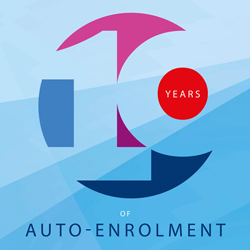Pensions policy through consensus
Helen Dean CBE
CEO, Nest Corporation

Helen Dean CBE, CEO of Nest Corporation, was, at DWP and the Personal Accounts Delivery Authority, one of the key architects of auto-enrolment. She looks at how it transformed workplace pensions and how it may evolve in the future.
What were the key factors behind the success of auto-enrolment?
AE was a complete leap into the unknown. It has been fantastically successful, but that outcome wasn’t a given. One of the reasons for its success is that the team worked hard to build cross-party support for auto-enrolment, with support from a wide range of groups, including employers, industry, the trade union movement and consumer groups.
As the lead official at PADA on AE policy, I know how much time was spent building this consensus. It was only possible because we focused on evidence-based policymaking. Although we are all now familiar with behavioural economics and ‘nudge’ theory, these were relatively new concepts at the time, and quite ground-breaking. But by studying the evidence, the industry was able to use this inertia to benefit individuals, and society as a whole, by boosting savings levels.
What were the key initial challenges?
One of the main challenges was delivery – ensuring systems worked smoothly and seamlessly. This involved completely re-thinking the occupational pensions model and adopting an e-business approach.
Before AE, most pensions administration was paper based, kept in filing cabinets, with money often paid in by cheque.
At Nest we opted for a self-serve approach, with people inputting their own data, and worked to integrate pension deductions with payroll to make the process easier for employers.
At the peak of the staging process we were enrolling around 180,000 companies a month into our pension scheme. There was a legal obligation for employers to do this, so it was important there were no delays or difficulties. Around 85 per cent of employers were able to do this without even having to contact us via the call centre.
What have we learned from AE?
We certainly now better understand the power of behavioural economics. These nudges can be very powerful and used to protect consumers as well as boosting savings levels. We’ve also seen the benefit of public/ private partnerships, with the pensions industry working alongside civil servants to deliver AE. This fusion, and diversity of thought, can be very effective. It makes you wonder whether this model could be adopted in other policy areas.
How should AE continue to develop? What improvements could be made?
AE has been successful but there is still clearly more to do. What should happen next will depend greatly on the current economic context. For some individuals, higher contributions may not be appropriate, particularly in the context of rising costs of living. We are pleased the Government is considering reducing the age at which people are automatically enrolled and ensuring contributions are made from the first pound earned. These changes should happen when the time is right.
Beyond this we also need to think about what people do with savings at retirement, particularly in light of the pension freedom rules, introduced after AE was launched. It is important to engage people and help them to understand their options as they’re approaching retirement. But we have to be realistic: we need a process for those who can’t or won’t engage with pensions, to smooth their pathway into retirement. As at the start of the AE journey, we need to ensure that if they continue to do nothing, good things still happen.
Another important area to address is self-employed workers. At the outset it was clear that this was a missing part of the policy and one we now need to return to.
We also have to look at financial resilience as a whole rather than narrowly focusing on pensions. Nest has been trialling its sidecar savings approach, enabling people to build smaller emergency savings alongside their pension, and we are looking at what approaches encourage take up.
What particular challenges lie ahead for AE providers and members?
Auto-enrolment opt-out rates and cessation levels have remained very low through different economic conditions, including austerity and the recent Covid pandemic. The current cost of living crisis though may prove to be a challenge. There may be some benefit to allowing people to pause contributions for three, six or 12 months if they are struggling financially, with contributions starting automatically again at the end of this period. If people opt out currently they will not be re-enrolled for three years, which may be too long. Evidence suggest that one of the most important determinants of a good pension is persistent saving over a lifetime.

